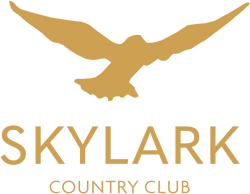Local Rules & Handicap Charts
Handicap Charts
White Tees
Yellow Tees
Red Tees
Local Rules
Out of Bounds (Rule 18.2)
Out of bounds is determined by the following conditions: a) The ball is considered out of bounds if it lies over or through any wall, fence, hedge, or in any ditch bordering the perimeter of the course. b) It is also out of bounds when it goes beyond any white stake that defines the out-of-bounds area within the course's perimeter (internal O.O.B.). However, there's an exception for the white stakes between the 6th hole and 18th hole, where the out-of-bounds rule applies only when playing the 6th hole.
Penalty Areas (Rule 17)
Penalty areas are identifiable by red lines or red stakes (Rule 17.1d(3)).
Abnormal Course Conditions (Includes Immovable Obstructions) Rule 16
Abnormal course conditions encompass various elements, such as paths, course furniture, steps, bridges, and more. a) This category includes the road crossing the 5th hole. b) It also covers fixed sprinkler heads and any other equipment connected with irrigation. In cases where a sprinkler head, considered an immovable obstruction, is either on or within two club lengths of the putting green of the hole being played and interferes with the line of play between the ball and the hole, the player may obtain relief without incurring a penalty. c) Steps into bunkers are classified as immovable obstructions, and relief can be taken, ensuring that the new position is no closer to the hole.
Ground Under Repair (Rule 16)
Ground under repair is indicated by white lines or G.U.R. signs, and players are prohibited from playing from such areas. If a player's ball is located within the area or interferes with their stance or intended swing, they must take relief according to Rule 16.
Staked Trees or Shrubs
Young trees or shrubs identified by stakes are designated as no-play zones. When a player's ball is anywhere on the course (excluding penalty areas) and is obstructed by such a tree, affecting their stance or intended swing, the player must take relief following Rule 16.1f.
Overhead Cables
For the 10th and 11th holes, if a ball strikes overhead cables, it must be replayed without incurring a penalty. Rule 14.6 applies. If the ball strikes the supporting pylon, it is considered the "rub of the green," and no relief is allowed.
Starting Instructions
Several starting instructions apply to all players without exception: a) Every player must book a tee time and report to the Pro Shop before starting their play. b) All players must have a set of clubs. c) It is mandatory for every player to carry their bag tags or green fee receipts with them at all times.
Penalty for Breach of Local Rules
In the case of a breach of local rules:
- In Match Play, the penalty is a loss of the hole.
- In Stroke Play, the penalty is a two-shot penalty.
Local Rule: No Play Zone - 1st Hole:
The 1st Hole now has blue stakes added around the perimeter of the eco-bund. This indicates that this area is a "No Play Zone." Please see the local rule for this area:
"The area defined by blue stakes to the left of the 1st hole is a no-play zone that is treated as an abnormal course condition. Relief must be taken from interference by the no-play zone under Rule 16.1f. The ball must be identified by the player or anyone else who sees a ball come to rest in circumstances where it is known to be the player's ball. If a player's ball has not been found, and it is known or virtually certain that the ball came to rest in or on an abnormal course condition on the course, the player may use this relief option ( 16.1B) instead of taking stroke-and-distance relief, using the estimated point where the ball last crossed the edge of the abnormal course condition on the course as the spot of the ball for purposes of finding the nearest point of complete relief.
But if it is not known or virtually certain that the ball came to rest in or on an abnormal course condition, and the ball is lost, the player must take stroke-and-distance relief under Rule 18.2.
Relief under 16.1B:
If a player's ball is in the general area, and there is interference by an abnormal course condition on the course, the player may take free relief by dropping the original ball or another ball in this relief area:
- Reference Point: The nearest point of complete relief in the general area. Size of Relief Area Measured from Reference Point: One club length, but with these limits:
- Must be in the general area.
- Must not be nearer the hole than the reference point.
- There must be complete relief from all interference by the abnormal course condition.
Virtually Certain Definition - Known or virtually certain means more than just possible or probable. It means that either:
There is conclusive evidence that the event in question happened to the player's ball, such as when the player or other witnesses saw it happen, or Although there is a very small degree of doubt, all reasonably available information shows that it is at least 95% likely that the event in question happened.
Local Rule - Exposed Bunker Lining:
In the event, any exposed bunker lining physically interferes with the player's area of intended stance, area of intended swing, or the ball comes to rest on the exposed lining, the player may take Free Relief: Playing from Bunker. The player may take free relief under Rule 16.1b, except that the nearest point of complete relief and the relief area must be in the bunker.
Transportation:
During a round, a player must not use any form of motorised buggy or ride-on buggy unless agreed to before the competition by the club. Players are allowed to be transported back to tees by ball spotters to improve the pace of play. Once the player has hit their shot, they will need to walk back to their ball.
Pace of Play:
A round of golf is meant to be played at a prompt pace. Each player should recognise that their pace of play is likely to affect how long it will take other players to play their rounds, including both those in the player's own group and those in the following groups. Players are encouraged to allow faster groups to play through.
Pace of Play Recommendations: The player should play at a prompt pace throughout the round, including the time taken to: Prepare for and make each stroke, Move from one place to another between strokes and move to the next teeing area after completing a hole.
A player should prepare in advance for the next stroke and be ready to play when it is their turn. When it is the player's turn to play, it is recommended that the player make the stroke in no more than 40 seconds after they are (or should be) able to play without interference or distraction. The player should usually be able to play more quickly than that and is encouraged to do so.
- Players are expected to be on the first tee 10 minutes before their allotted tee time.
- Players have 3 minutes to find any lost ball.
- Players are also expected to hit provisionals if there is a possibility of not finding their original ball.
- If a group loses a clear hole, they are expected to call the group behind through at the earliest opportunity.




